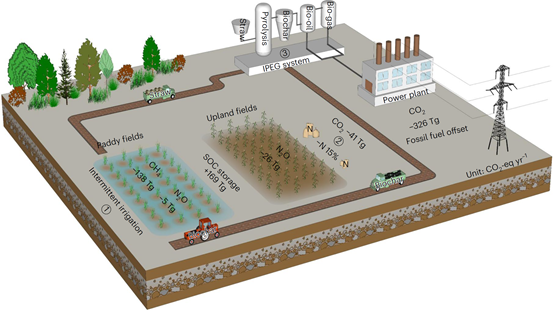Staple food production is an important source of greenhouse gas (GHG) emissions, due to high methane (CH4) and nitrous oxide (N2O) emissions from flooded paddy fields and intensive use of nitrogen fertilizer. However, it remains unclear how staple food production can achieve carbon neutrality.
In a study published in Nature Food, researchers from the Institute of Soil Science, Chinese Academy of Sciences (ISSAS), conducted a comprehensive life-cycle assessment and demonstrated the pathways of staple food production in China transition to carbon neutrality
The researchers firstly estimated total GHG emissions from staple food production in China in 2018 and found that these emissions accounted for more than 50% of the GHG emissions associated with agricultural activities, stressing the need for mitigation management practices.
They then evaluated GHG mitigation potential of three management practices and suggested that traditional practices, such as increasing straw application coupled with CH4 mitigation and N fertilizer reduction, can only reduce the total GHG emissions by 16%, whereas the reduction effect would be increased to 66% if straw was converted to biochar before application but this still failed to reach carbon neutrality.
The researchers then developed an integrated pyrolysis and electricity generation (IPEG) system and demonstrated that the IPEG system combined with CH4 mitigation and N fertilizer reduction (IPEG-CH4-N) can help staple food production become carbon neutral. Moreover, the integrated system can benefit food security and environment sustainability through increasing crop yields and reducing nitrogen losses, and air pollutant emissions.
"Our study highlights that the integrated IPEG–CH4–N system, partly by displacing fossil fuels, could play an important role in reaching the targets of agricultural carbon neutrality in China” said XIA Longlong in ISSAS.
https://www.nature.com/articles/s43016-023-00694-0
 |
| The IPEG–CH4–N system can help staple food production achieve carbon neutrality |
Contact:
XIA Longlong
Institute of Soil Science, Chinese Academy of Sciences
E-mail: llxia@issas.ac.cn
